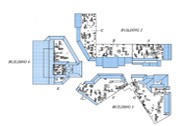KEYS TO EXTENDING SERVICE LIFE OF TILE ROOFS
The service life of tile roofs is generally expected to be about 50 years and yet, many clients have had tile roofs with significantly less service life than this. Many tile roofs require replacement between 10 and 20 years. Over the years INDEPENDENT ROOFING CONSULTANTS has discovered several common factors that contribute to a reduced tile roof service life.
Tile roof system installed to minimum standards
For many tile roofs (over 4:12 roof slope), a single layer of underlayment is allowed by conventional building codes. The underlayment is required to perform not only under the abuse it receives during original construction, but over a period of 50 years thereafter. This is simply an unrealistic expectation. Once the tiles are installed over the underlayment felt, damage such as punctures and tears, or less than complete coverage of the deck are completely hidden. A second layer of underlayment can greatly reduce potential problems.
Edge metal flashings are not required by building codes where the design includes roof eave or rake overhangs. Without edge metal flashing, deterioration at the edges of the roof occurs at an accelerated rate, reducing effectiveness of waterproofing at these critical areas.
Poor roof installation workmanship
Sloppy tile roof layout can result in exposed tile nail holes, loose tiles, and lifted tile pieces. These types of common conditions allow water to reach the underlayment, where additional deficient items as a result of poor workmanship will result in leaks in the system. Attention to design and details can maximize tile roof longevity.
Lack of minimal routine maintenance
Foot traffic on tile roofs from Christmas light or satellite dish installation, painting, gutter work, etc. often causes broken tiles. Damaged tiles expose the underlayment felt, causing accelerated deterioration or damage. Debris from adjacent landscaping such as overhanging trees collects on the roof and may cause water to back up under tile and underlayment. Annual inspection and routine maintenance can greatly reduce these potential problems.
Tile roofs, like any other roof system, require proper design, construction, and maintenance to optimize service life. Cutting corners in any of these areas will result in less than adequate results and may cost more over the life of the roof.


